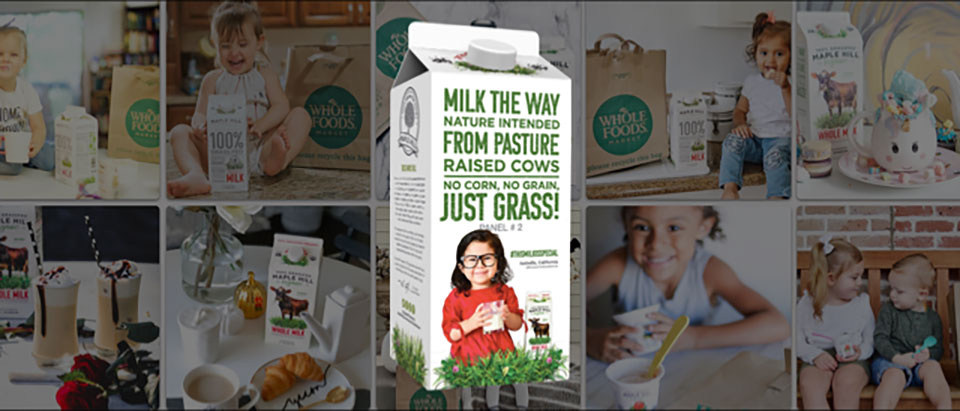There is no denying the transformative powers of the digital revolution. For so long, advertising was confined to the physical entities of billboards, television, and magazines, and now, we can reach consumers across dozens of digital touch points anywhere, any time, with any message. But in this highly digital world, where a physical world still very much exists, we’re now asking ourselves: how can we effectively and artfully reconcile the two? This question defines the future of marketing, and those who can strategically cultivate brand cohesion across the physical and digital realms, with synergistic harmony, are bound to come out on top.
For now, as our landscape continues to shift and evolve, here are a few tactics that work:
Blend Your Ecosystems
Today’s consumer wants to be able to flow back and forth with a brand, online and offline, and have the same exact feelings, responses and experiences in each realm. Blending the physical and digital brand ecosystems to create a seamless customer experience has never been so important. Brand image and visual experience plays a huge role in this cohesion. It’s no longer enough for a brands’ packaging to communicate its image, story and value from the shelves alone; it must also harmoniously align with its digital ecosystem in order to create a consistent feel.
Maple Hill’s decision to use consumer-generated social images on their milk cartons is a great example. By involving customers in their digital forum into the actual design and imaging of their physical product, they connected the online and offline relationship, made customers feel included in the experience, and put out a product that felt not only personal and customized, but also recognizable.
Human Experiences Above All
The fact remains that even though we’re spending more and more time online and on our mobile devices, we still want experiences more than anything, and we want experiences where we’re engaging with real people, in the real world. A report by Eventbrite revealed 78% of millennials would rather spend their money on an exciting experience or event instead of buying something desirable. In order to leverage the power of shared experiences, emotions, and memories with their audiences, brands should embrace experiential marketing in the physical realm, bringing real people together in real time.
Additionally, according to a report by Statista, 93% of consumers reported that live events have a larger influence on them when compared to TV ads. The wonderful aspect of experiential marketing is that it allows brands to harness their most wild and imaginative consumers, really leveraging the creative brain power of any marketing team. Over the years, we’ve seen brands go in all directions with experiential events, from HBO’s escape rooms, to Coca-Cola’s small world machines, to Volkswagon’s piano staircase. Whether it’s a pop-up shop, a dynamic exhibit, a mini museum or an elaborate, creative play space, the possibilities to cultivate a sensational, dynamic and memorable brand experience in the physical realm are infinite.
Snail Mail Works
Believe it or not, direct mail is experiencing a resurgence, especially among digitally-native companies looking to diversify their investment allocation beyond digital. Its tangible nature and personalized feel is refreshing for the majority of us who are continuously tethered to our laptops. And snail mail can have digital properties, too. By embedding physical materials with a clear call to action, such as a discount code, brands can measure performance — from driving online traffic to increasing sales.
According to a report by ANA/DMA, direct mail still pulls a higher response rate when compared to any other digital direct marketing medium, holding a response rate of about five to nine times greater than that of email, social media, or paid search. By tapping into consumers’ nostalgia, leveraging personalized and visual content, and making an authentic effort to reach out in an individual way, direct mail still holds its weight.
Old School Billboards
Today, anything that’s tactile and tangible is incredibly refreshing to the millennial and GenZ cohort, who are largely tethered to their mobile screens. Because of this, brands have enormous power to engage and attract attention with old school signage and creative advertising mediums in the form of murals, posters, and billboards. And in our hyper visual world, these kinds of massive visual experiences are hot fodder for social posts and social sharing. In fact, according to Nielsen, 1 in 4 Americans have posted an image of a billboard ad on Instagram. Case in point, as part of Apple’s “Shot on iPhone” billboard campaign, the technology company leveraged social media to find some of the most stunning photos captured on iPhones and then repurposed the organic user-generated content onto billboards, in select cities around the world. The end result was a mirage of memorable and eye-stopping billboards across the globe that ultimately helped Apple generate widespread awareness for their campaign.
Looking Forward
With unlimited opportunities to creatively bridge the worlds of physical and digital, it’s an exciting time to be in marketing. And as we move forward in an ever changing and highly unpredictable landscape, harnessing the new powers of digital world, while reclaiming the traditional tactics from the past, will be a challenging but rewarding balancing act. In marketing to the next generation of consumers, finding ways to create seamless and cohesive brand experiences that cultivate real human emotion and connection will be key.


